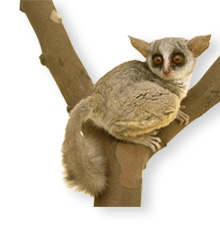As far as we know, mammals appeared on Earth some 200 million years ago. We know because we have found their fossils: bones, teeth, and other parts that have been turned to stone and preserved in rocks. During their first 100 million or so years, life on land was mainly dominated by huge dinosaurs, while pterosaurs flew above and ichthyosaurs swam in the sea. The first true mammals were probably small, shrewlike creatures that were active at night and fed by eating insects and stealing dinosaur eggs. As the dinosaurs dies out, and finally disappeared some 65 million years ago, mammals filled their place.
So what is a mammal? Although they have many special characteristics, there are several traits that stand out to define the group. One, mammals have fur or hair. Many have it all over their bodies; we do too, although it shows the most on our heads. Two, mammals are warm-blooded. A more correct term would be homeothermic, meaning that a constant internal body temperature is maintained, usually above that of the environment, rather than adjusting to the temperature of the surroundings. In this way mammals can stay active even in cold conditions. Three, mammals feed their young on milk. The milk is made in specialized skin structures called mammary glands; hence our group's biological name, Mammalia.
Another reason for the mammals' success is their "good sense"—their generally well-developed senses of sight, hearing, smell, taste, and touch. Each sense has been molded by evolution to fit its owner's way of life. For example, good vision would be of little use to an underground mammal like a mole, so this creature has poor eyesight; but it has an extremely sensitive muzzle that combines touch and smell in order to find food (chiefly earthworms that emerge from the walls of its burrow).




















